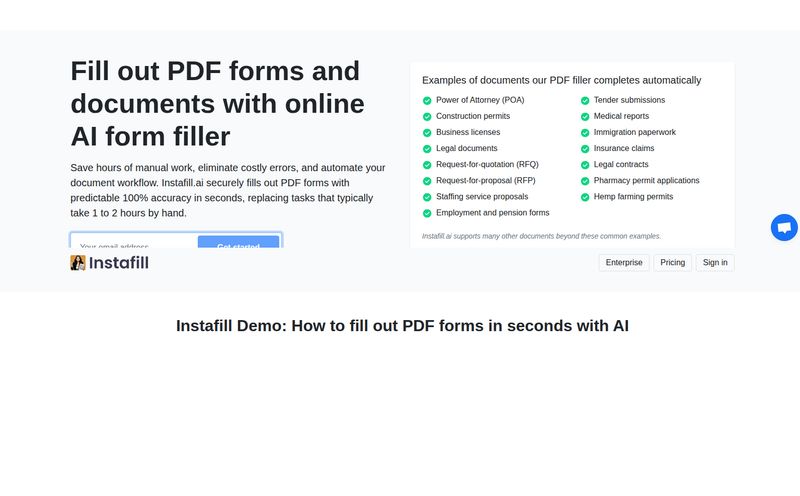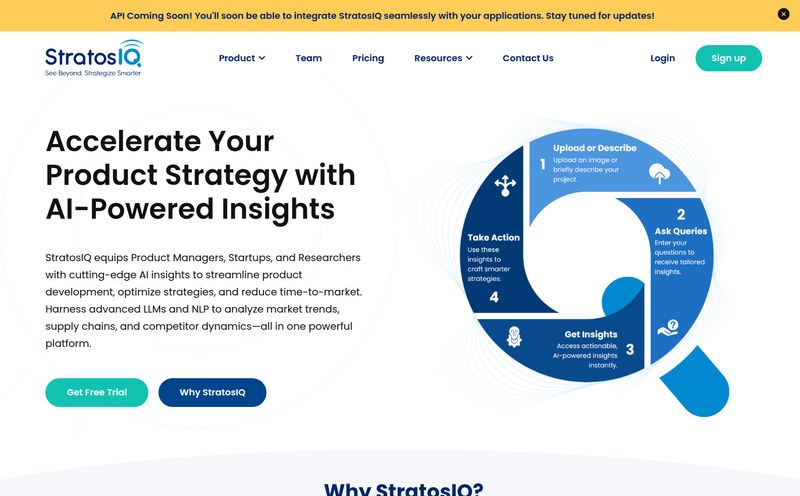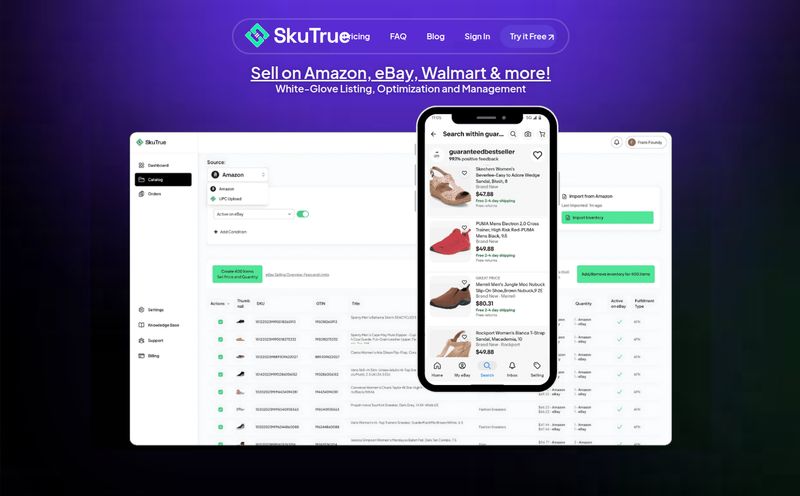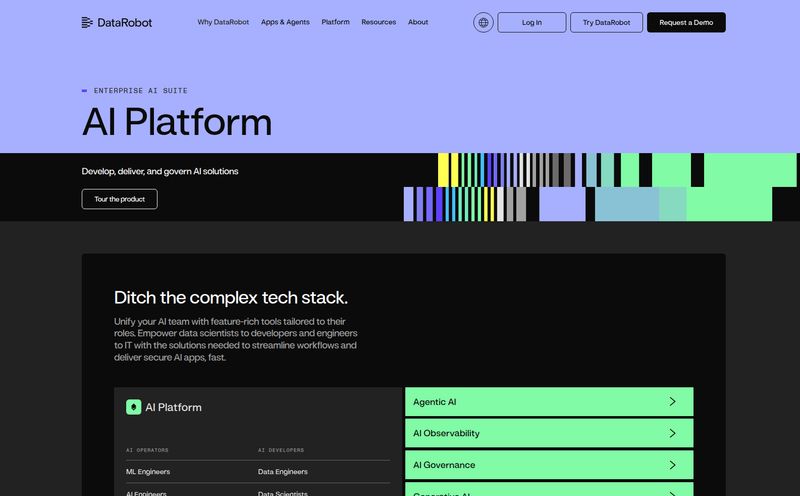I’ve been around the block with project management tools. Trust me. From wrestling with sprawling Jira boards that look like a digital Jackson Pollock painting to trying to make sense of endless Asana sub-tasks, I’ve seen it all. They all promise to make work simpler, to bring clarity to chaos. And yet, how often do we end up just managing the tool instead of the project?
It’s a cycle of hope and frustration. So, when a new tool pops up on my radar with a genuinely different approach, my curiosity gets the better of me. The latest one to catch my eye is called Sequential. Its landing page is minimalist, almost stark, but the headline makes a big promise: “A better way to manage work.”
A bold claim. But is it true? Let’s take a look.
So, What Exactly Is Sequential?
At first glance, Sequential might sound a bit academic. It’s built on the idea of a “directed graph.” Now, don’t let the nerdy term scare you off. Think of it this way: most project management tools are like a simple to-do list or a calendar. Tasks are individual items you check off. A Gantt chart shows a timeline, which is better, but can still feel rigid and flat.
Sequential treats a project like a web, or a network. Each task is a node, and the lines connecting them show the dependencies. You can’t start painting the walls (Task D) until the drywall is up (Task C), and the drywall can’t go up until the framing is done (Task A). In a complex project, these dependencies get messy. Sequential’s goal is to make that web of connections crystal clear. It's less about a list of things to do and more about understanding the flow of the work itself. It's the difference between a grocery list and a recipe; one is just a collection of items, the other tells you the order and how they connect to create the final dish.

Visit Sequential
Borrowing from the Giants: A Nod to PERT and CPM
What really intrigued me is that this isn't some brand-new, untested theory. The website explicitly states it's “inspired by the best practices of history’s most effective organisations.” They’re talking about PERT and CPM, and for us process nerds, that’s a big deal.
For those not in the know, PERT (Program Evaluation and Review Technique) and CPM (Critical Path Method) are project management methodologies developed way back in the 1950s. The U.S. Navy used PERT to manage the Polaris submarine missile program, a massively complex project. These methods are all about identifying the “critical path”—the longest chain of dependent tasks that determines the project’s minimum completion time. If any task on that critical path gets delayed, the whole project gets delayed.
So, Sequential isn’t reinventing the wheel. It's taking a proven, battle-tested concept and giving it a modern interface and a shot of AI. I respect that. It shows they understand that some of the old ways are old for a reason: they work.
The AI Promise: Is It All Hype?
Ah, the magic two letters of our time: AI. Sequential claims to be “Powered by the latest AI models.” This is where my inner skeptic sits up and pays attention. Nowadays, every other SaaS tool slaps an “AI-powered” label on its features, and half the time it just means a slightly better search function.
But in the context of a graph-based system, AI could be genuinely transformative. Imagine an AI that constantly analyzes your project graph. It could:
- Predict Bottlenecks: Proactively warn you that a specific task is at high risk of delaying the entire project.
- Optimize Resources: Suggest reallocating a team member from a non-critical task to one on the critical path to speed things up.
- Run Scenarios: Quickly model the impact of a potential delay. “What happens if the design mockups are three days late?”
This is the real potential. Not just showing you the connections, but helping you manage them intelligently. Of course, the website is vague on the specifics, so for now, this is just hopeful speculation on my part.
My Honest Take on the Pros and Cons
No tool is perfect, especially one this new. Based on the limited information we have, here's my breakdown.
What I'm Genuinely Excited About
The core concept is brilliant. For anyone who has managed a truly complex project—think a software launch, a construction build, or a multi-channel marketing campaign—visualizing dependencies is the biggest headache. A Kanban board just doesn’t cut it. The focus on a directed graph could bring incredible clarity and help teams finally see how their individual piece of work impacts the whole. The foundation in PERT/CPM is also a massive plus, it gives the whole thing an air of engineering credibility that many prettier, fluffier tools lack.
Where I'm Raising an Eyebrow
Let's be real, the platform seems to be in its infancy. The website is a single landing page. When I first visited, I even hit a temporary application error screen, which is a classic sign of a product that's still very much a work in progress. There’s no demo, no feature list, no case studies. It’s an idea with a “Get started” button.
My main concern is the potential learning curve. Will project managers need a crash course in graph theory to use this effectively? And as I mentioned, the AI component is a black box. Without seeing it in action, it's just a buzzword on a webpage. We need to see the proof in the pudding.
What's the Damage to My Wallet?
Right now, your wallet is safe. There’s absolutely zero information on pricing. This isn’t surprising for a tool at this stage. I’d guess they’re in a beta phase, gathering feedback from early users. When they do launch, I’d expect a standard SaaS model, probably a per-user/per-month fee with different tiers. Perhaps a free tier for small projects to get people hooked on the graph-based approach. We’ll have to wait and see.
Frequently Asked Questions About Sequential
- What is Sequential in simple terms?
- It's a project management tool that visually maps out your project as an interconnected network of tasks. This helps you clearly see how tasks depend on one another, making it easier to manage complex projects and deliver work faster.
- What are PERT and CPM?
- They are project management methodologies from the 1950s that focus on identifying the most critical sequence of tasks (the “critical path”) to determine a project's timeline. Sequential uses these proven ideas as its foundation.
- Is Sequential good for beginners?
- It's hard to say without seeing the final product. While the visual approach could be intuitive, the underlying concept of directed graphs might be new to some. It may be better suited for experienced project managers handling complex work, at least initially.
- How is AI used in Sequential?
- The details are still unclear, but the potential is for AI to analyze the project map to predict delays, suggest resource optimizations, and identify risks on the critical path before they become major problems.
- Is Sequential available to use now?
- It appears to be in a very early stage, likely a closed beta. You can sign up on their website to get started, but public availability and features are not yet detailed.
Final Thoughts: One to Watch
So, is Sequential the future of project management? It’s too early to say for sure. The idea is potent, and Lord knows the industry needs a shake-up. We're drowning in glorified checklists.
What Ryan Cushen and his team are building is ambitious. They’re looking past the current fads and digging into the fundamentals of how work actually gets done. It has the potential to be a powerful tool for serious project managers. It’s not for planning your weekly grocery trip; it's for building the next Polaris submarine.
For now, I'm cautiously optimistic. I've signed up to get started, and I’m eagerly waiting to see more. Sequential is a promising flicker on the horizon, a tool built on a powerful idea. I’ll be keeping a very close eye on this one.
References and Sources
- The official website for the tool: Sequential
- For more on PERT: Program Evaluation and Review Technique - Wikipedia
- For more on CPM: Critical Path Method - Wikipedia



